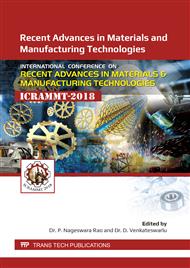p.3
p.9
p.16
p.22
p.27
p.34
p.41
p.48
Application of Rietveld Refinement and Williamson Hall Analysis in Ultra-Low Carbon to High Carbon Steels
Abstract:
Current study deals with the microstructural characterization of five different plates of steel with carbon concentration ranging from ultra-low to moderately high. Phase analysis was carried out using XRD technique. The XRD results were analyzed through Rietveld refinement and Williamson Hall plots. Rietveld refinement was carried out to understand the effect of carbon concentration on the lattice parameters of the above steel samples in as-received condition and also after deformation under uni-axial tensile loading. Lattice parameters obtained from refinement showed the strong dependence on carbon concentration of the given steels. But the failed specimens showed somewhat complex results as Spheroidized high carbon steel, Low carbon steel and IF steel showed an increase in lattice parameter whereas Medium carbon steel and Microalloyed steel showed a contraction in lattice parameter. Williamson Hall plot gave the crystallite size, microstrain and dislocation density in the steels. For IF and Microalloyed steels the dislocation density in the material is found to be higher after deformation whereas dislocation density decreased in Spheroidized high carbon steel, Medium carbon steel and Low carbon steel.
Info:
Periodical:
Pages:
3-8
Citation:
Online since:
August 2019
Authors:
Price:
Сopyright:
© 2019 Trans Tech Publications Ltd. All Rights Reserved
Share:
Citation:


